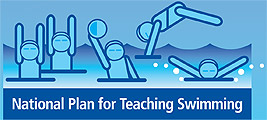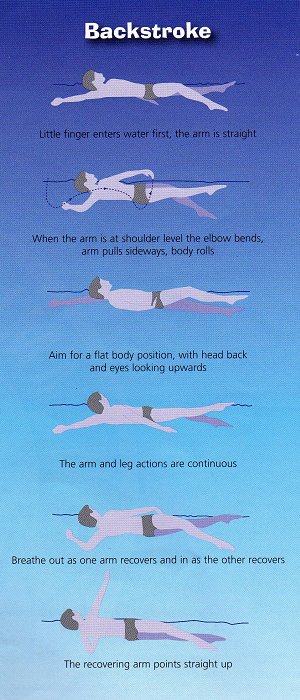Body
- Back of the head in the water, and held still in a central position. Eyes looking upwards and slightly forwards (in the direction of feet).
- Body almost horizontal, stretched and streamlined on the back, with chest clear of the surface and hips slightly submerged.
- Shoulders and upper body rotating with a controlled roll of the shoulders.
Legs and Feet
- Legs move in a positive alternating leg kicking that predominantly originates from the hip with the knees slightly bent.
- Legs close to the surface, toes pointed and slightly turned inward. There should be a slight splash of the feet as they pass close to each other and the result of the feet pushing against the water.
- The kick should be continuous.
- The kick may be slow and steady, or fast and powerful, dependent on the individual’s preference.
Arms and Hands
- Hand is placed into the water, little finger first, palm facing outward. The entry is in line with the shoulder.
- Hand catches and as it starts its pull through the elbow bends with palm facing inwards pressing towards the body keeping the elbow higher than the hands and as the arms straightens.
- The shoulder leads the arm recovery, lifting up and round as the hand leaves the water. The elbow is kept straight as the arm lifts straight up above the shoulder to the entry point.
- A deep ‘catch’ as the hand enters the water and a strong bent elbow pull as the shoulders roll will result in a more powerful pull and increased distance gained per stroke.
Breathing
- Breathing regularly in relation to the effort phases of the stroke.
Timing
- The kicking and pulling must be co-ordinated and controlled whilst maintaining a steady head position throughout.
- All action must be smooth, continuous and consistent whilst a relationship of stroke length and stroke rate must be developed and vary with the requirements of the swim.

